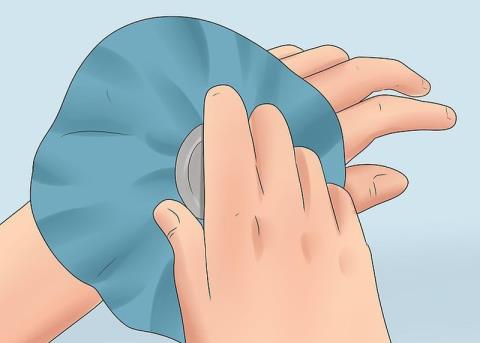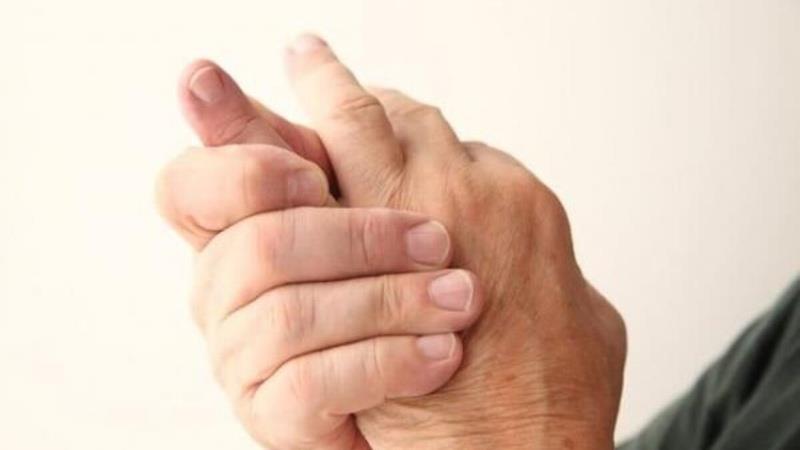What to do when you sprain your little finger?

A sprained little finger can cause pain and discomfort for the patient. So what is the cause of the little finger sprain? And what should the patient do when encountering this situation?
A sprained little finger leads to stiffness, pain, and swelling. This condition occurs when the ligaments are torn or stretched due to an injury or fall. A sprained little finger can be treated at home, but go to the hospital as soon as symptoms become severe or persistent.
Causes of little finger sprain
Most sprains are caused by an injury that causes the little finger to be bent backwards or out of alignment. This condition often occurs in subjects who play sports such as basketball, volleyball or handball.
Falling, hitting the hand or using the hand to support when falling is also the cause of the little finger sprain. Especially for weak ligaments, there is a higher risk of sprains. Work-related injuries or accidents in everyday life can also cause sprains.
 Most sprains are caused by an injury that causes the little finger to be bent backward or out of alignment.
Most sprains are caused by an injury that causes the little finger to be bent backward or out of alignment.
Besides injuries, there are a number of risk factors that can lead to a little finger sprain including:
- Lack of exercise: Lack of regular exercise will weaken the muscles and increase the risk of spraining the little finger.
- No warm-up: Exercising without proper warm-up puts pressure on joints, muscles, and ligaments. This also makes the muscles stiffer, tightening the joints, which in turn leads to injury, stretching or rupture of ligaments leading to sprains.
- Poor conditions: Poor exercise or exercise conditions, such as slippery floors, poor friction or substandard training shoes, can increase the risk of falls. Therefore, it is easy to lead to injuries including sprains.
- Fatigue: Exercising or exercising when the body is tired can put pressure on the joints. This puts too much strain on the muscles and ligaments and leads to a little finger sprain.
What to do when you sprain your little finger?
Depending on the specific symptoms, the patient can use different ways to treat sprained little finger
There are many methods used to improve the symptoms of a little finger sprain and help the patient feel more comfortable. Depending on the specific symptoms, the patient can use the following ways to treat sprained little finger:
Treatment of little finger sprain at home
Usually a little finger sprain is not serious and can be treated at home. Some common measures include:
- Rest: Let the injured little finger rest and immobilize if possible. Also stop doing activities if injured to give the little finger time to heal.
- Cold compress: Apply cold to the sprained little finger for 15-20 minutes at a time, about 4 times a day, especially within the first 24 hours. This can help improve pain and shorten treatment time. However, patients should be careful not to apply ice directly to the skin because it can cause frostbite .
- Compression: Wrapping an elastic compression bandage around the injured little finger joint can help reduce swelling. It also helps restore normal activities without causing damage to the joints. The patient needs to make sure that the wrap is not too tight and that the finger is comfortable.
- Elevation: For the first 24-72 hours, people with a sprained little finger should elevate the injured hand to reduce swelling.
- Pain relievers: Patients can take over-the-counter pain relievers and anti-inflammatory drugs such as ibuprofen to ease pain and discomfort.
 Cold compresses help improve pain and shorten treatment time
Cold compresses help improve pain and shorten treatment time
Medical treatment
If within 24-48 hours after the injury, the little finger sprain does not improve, then go to the hospital for timely diagnosis and treatment. Treatment for a little finger sprain depends on the severity of the symptoms. Treatment methods include:
- Supportive bandages: Your doctor may order a finger wrap to increase stability as well as reduce pain and prevent further injury.
- Splints: A splint or plastic finger bracket can be used to hold the finger in place for as long as possible to improve the injury.
- Surgery: This method will be indicated when the ligaments of the little finger are severely torn or completely torn. The purpose of surgery is to restore injury, relieve pain as well as prevent possible risks.
Little finger sprains are painful, but most cases improve within 1-2 weeks. However, if the condition is severe, it may take about 3 to 10 weeks for the injury to fully heal.
Although this is not a serious injury, there is a potential for complications. Therefore, if symptoms persist or worsen, the patient should go to the hospital for appropriate treatment. Hope this article can help you know how to deal with a sprained little finger .